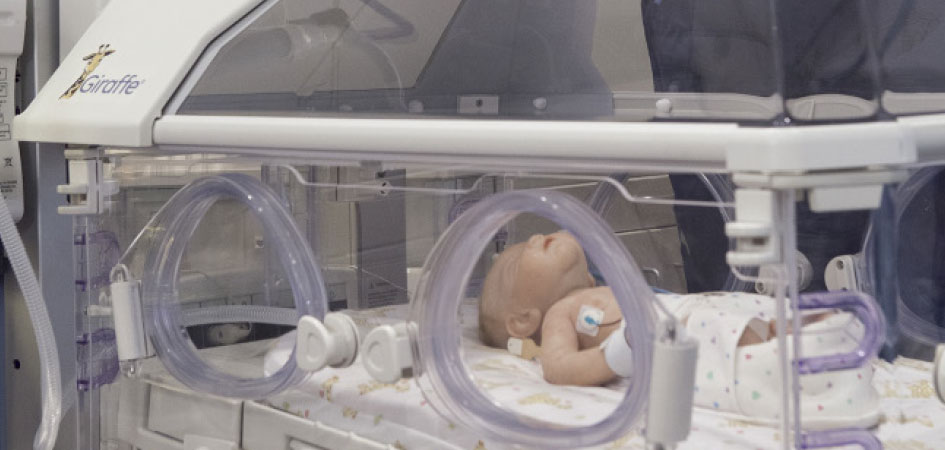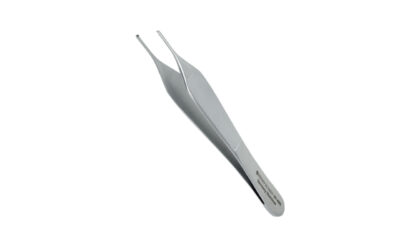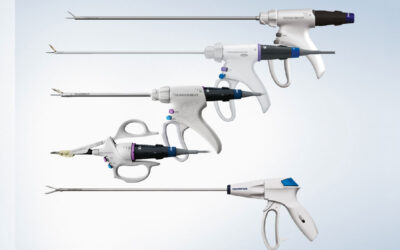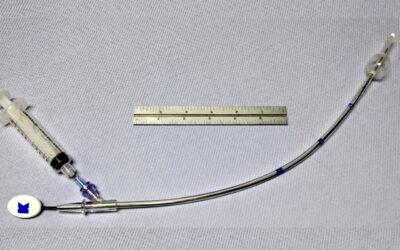 In the womb, the infant’s body temperature is effortlessly regulated at about half a degree Celsius above that of the mother’s. Once the baby leaves the womb, its temperature falls to within a normal range, but a premature infant’s temperature can fall lower and will require immediate action by the neonatal clinical team. In fact, for every degree below 36 degrees Celsius, the baby’s survival rate drops by 28 percent.1, 2, 3, 4 The Giraffe OmniBed Carestation is designed to address the changing and complex demands of the NICU by utilizing advanced technology to provide supportive, family-centered care solutions, consistently controlled thermal environments, warmth during transport when paired with the Giraffe Shuttle, improved patient access and visibility, and reliable clinical performance.
In the womb, the infant’s body temperature is effortlessly regulated at about half a degree Celsius above that of the mother’s. Once the baby leaves the womb, its temperature falls to within a normal range, but a premature infant’s temperature can fall lower and will require immediate action by the neonatal clinical team. In fact, for every degree below 36 degrees Celsius, the baby’s survival rate drops by 28 percent.1, 2, 3, 4 The Giraffe OmniBed Carestation is designed to address the changing and complex demands of the NICU by utilizing advanced technology to provide supportive, family-centered care solutions, consistently controlled thermal environments, warmth during transport when paired with the Giraffe Shuttle, improved patient access and visibility, and reliable clinical performance.
1- Miller SS, Gould JB, and Lee HC. Hypothermia in very low birthweight infant: Incidence and risk factors. Pediatric Academic Society Meeting, 5/6/2007, E-PAS2007:616280.31.
2- Bhatt DH, Carlos CG, Parikh AN, White R, Seri I, and Ramanathan R. Prevalence of transitional hypothermia in newborn infants on admission to newborn intensive care units. Pediatric Academic Society Meeting, 5/7/2007, E-PAS2007:617933.23.
3- Barber N, DeCristofaro JD, and Chen J. Hypothermia and re-warming in extremely low birthweight infants and subsequent clinical consequences. Pediatric Academic Society Meeting, May 2006, EPAS2006: 59:365.
4- Laptook AR, Salhab W, Bhaskar B and Neonatal Research Network. Admission temperature of low birthweight infants: Predictors and associated









